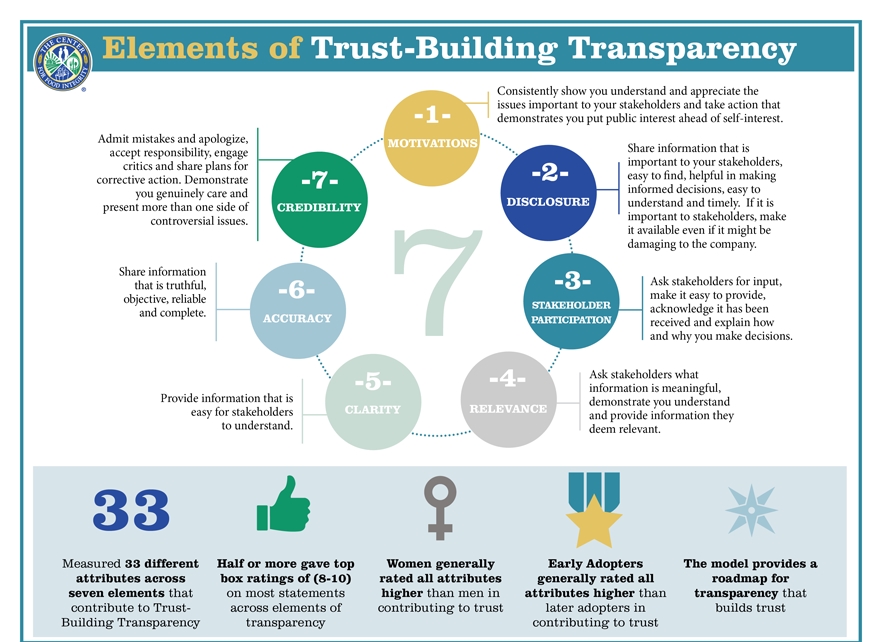In today’s hyper-connected, digital communications environment, news of a food safety or fraud incident travels at the speed of social networking site Twitter.
If unprepared, these incidents can be devastating to a food company.
Managing the fallout begins with engaging consumers immediately.
Food safety and fraud incidents have some important differences in the way they impact trust.
When a food safety incident occurs, consumers may believe there is potential for an immediate impact on “my family and I”, so the level of concern is going to be high.
Once the incident has passed, and if it is managed appropriately, companies can and have recovered from the episode.
A food fraud incident is different in that it not only erodes trust in a company or product, it raises questions about whether a company is worthy of long-term trust.
Food fraud is a rising risk.
The public is largely unaware of the magnitude of food fraud in the market today and if that awareness increases, it becomes increasingly difficult for food companies to maintain the level of credibility they have enjoyed in the past.
It could result in additional legislation in order to reduce the likelihood of food fraud from occurring.
Being transparent before consumers
Preventing food-related crises begins with realizing that transparency is no longer optional.
Any person with a smartphone is a videographer and social media networks provide instant communication to thousands of friends and “followers”.
Food companies must provide information to customers about their supply chain and their commitment to safe food, integrity and maintaining the quality and safety of products.
It is a matter of making sure the appropriate systems are in place to back up those claims.
While there is no perfect system, companies must be able to demonstrate that they have the best systems in place so that if an incident were to occur, consumers can logically assume that it was an exception.
Being transparent, engaging consumers and backing it up with the appropriate systems, can help assure consumers that food safety is the top priority and a company can guarantee the integrity of its supply chain.
If an incident were to incident occur, engage with consumers early.
Accept responsibility; apologize and help people understand what you are doing to rectify the situation.
Case studies
The Maple Leaf Foods deli meat listeria outbreak in 2008 provided a case study of a company that responded well.
It was a devastating incident that resulted in loss of life and many illnesses.
Maple Leaf accepted responsibility, apologized publicly and redoubled efforts to assure food safety.
The company suffered US$13 million in losses the year of the recall but rebounded with US$22 million profit the following year.
Stock shares took three months to return to pre-recall levels.
While you can never reduce the loss of life to dollars and cents, the stock price is an indicator of how well a company has recovered from an incident that could otherwise devastate or destroy if it was ill-prepared.
While it does not involve a food safety or fraud incident, another good example of embracing transparency is the McDonald’s Canada website’s <(www.yourquestions.mcdonalds.ca>, “Our Food. Your Questions”.
It answers the common questions and skepticism consumers have today, in a manner that encourages and builds trust.
Seven elements of transparency
The Center for Food Integrity’s research on consumer trust shows it pays to demonstrate meaningful transparency.
Its latest study identifies the seven elements of transparency that can contribute significantly to building the trust of consumers on manufacturers.
- Motivation – Consistently show that you understand and appreciate the issues important to your stakeholders and take action that demonstrates you put public interest ahead of self-interest.
- Disclosure – Share information that is important to your stakeholders; make it easy to find; helpful in making informed decisions; easy to understand, and timely.
- If it is important to stakeholders, make it available even if it might be damaging to the company.
- Stakeholder Participation – Ask stakeholders for input; make it easy to do so; acknowledge it has been received and explain how and why you make decisions.
- Relevance – Ask stakeholders what information is meaningful; demonstrate you understand and provide information they deem relevant.
- Clarity – Provide information that is easy for stakeholders to understand.
- Accuracy – Share information that is truthful, objective, reliable and complete.
- Credibility – Admit mistakes and apologize; accept responsibility; engage critics and share plans for corrective action; show that you genuinely care and present more than one side of controversial issues.
Communicate in the digital world
Digital communications provide food companies avenues to engage directly with consumers in a way that is intimate, personal, and authentic.
It provides the opportunity to genuinely communicate values and engage in conversation.
However, it requires a different skill set and discipline, as well as a commitment to communicate early, often and consistently.
Food companies are still trying to come to grips with this new way of communicating. They need to consider who they are communicating online with, the way and the best time to communicate.
Establishing a solid foundation of digital communications support can go a long way toward preserving and restoring a company’s reputation and is crucial to long-term success.
However, the company must be prepared to engage instantly and continuously in case of an incident, which requires plans and resources in place to make it happen.
Story by Charlie Arnot, CEO of The Center for Food Integrity.











